
The path taken by the Earth as it rotates around the Sun is known as its orbit. It is common knowledge that our planet, Earth, orbits around a star known as the Sun. It takes the Earth approximately 365 days to complete a full revolution around the Sun.
The Earth’s orbit discovery
In ancient times, there was a belief that the Earth was the center of the universe and that all other celestial bodies revolved around it.
However, this belief was proven false, and the geocentric model of the universe was quickly replaced by the heliocentric model. According to the heliocentric model, the Sun is the center of everything, and the planets, including Earth, revolve around it. It was later discovered that even the Sun is not the center of the Universe, but that is a different story. You can find more information on this topic in the article titled “The Structure of the Universe”.
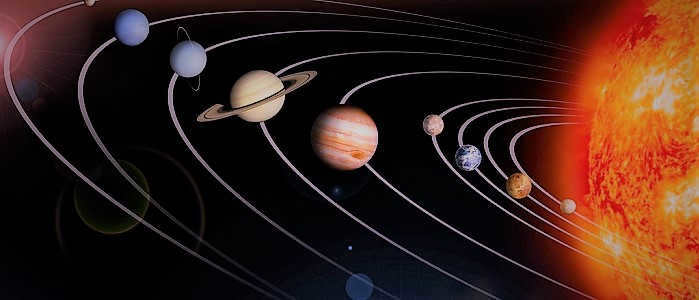
The heliocentric model not only explained the movement of the planets around the Sun, but also provided a precise description of their paths. Initially, it was believed that the planets moved in circular orbits, but later observations revealed that their paths were actually more elongated and shaped like ellipses.
One of the key figures in the development of the heliocentric model was the renowned astronomer Nicolaus Copernicus, although the concept had been hypothesized by earlier thinkers such as Plato and Aristotle.

What is the Earth’s path around the Sun
By what path does the Earth rotate around the Sun? The same as all the other planets in our system – elliptical, resembling a slightly elongated circle. The paths of the planets in the solar system have an eccentricity, a value that determines its shape. 0 is a perfectly flat circle, and 1 is a full-fledged ellipse. The Earth’s eccentricity is 0.0167, which means its path is only slightly elongated.
Furthermore, there are two alternative terms that elucidate the utmost (apocenter) and nearest (pericenter) position of a planet’s trajectory in relation to the star. For the Earth, these positions are situated at a distance of 152 and 147 million kilometers from the Sun, correspondingly. The standard radius of our planet’s orbit is acknowledged to be 150 million kilometers. This interval has also been denoted as an astronomical unit and is employed for assessing distances in the cosmos.
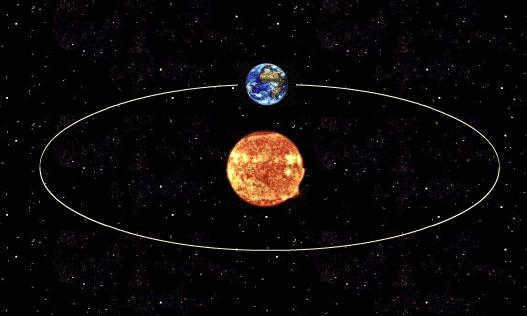
The Earth revolves around the sun in a specific path, which helps maintain its climate and temperature. Although the Earth completes its rotation in approximately 365 days, it actually takes 365.242199 days. As a result, every four years, we add an extra day to the calendar – February 29.
Plane of Orbit
All planets orbit in a flat plane rather than in three-dimensional space. This plane is known as the ecliptic. It’s not just the Earth that follows this path, but all the other planets in our solar system as well.
The Earth’s axis of rotation is not perpendicular to the ecliptic, as it may initially seem. In reality, it is tilted at a significant angle of 23 degrees. This tilt causes different hemispheres of the Earth to be heated unequally, resulting in the southern hemisphere being warmer than the northern hemisphere. Additionally, this axial tilt is responsible for the changing seasons.
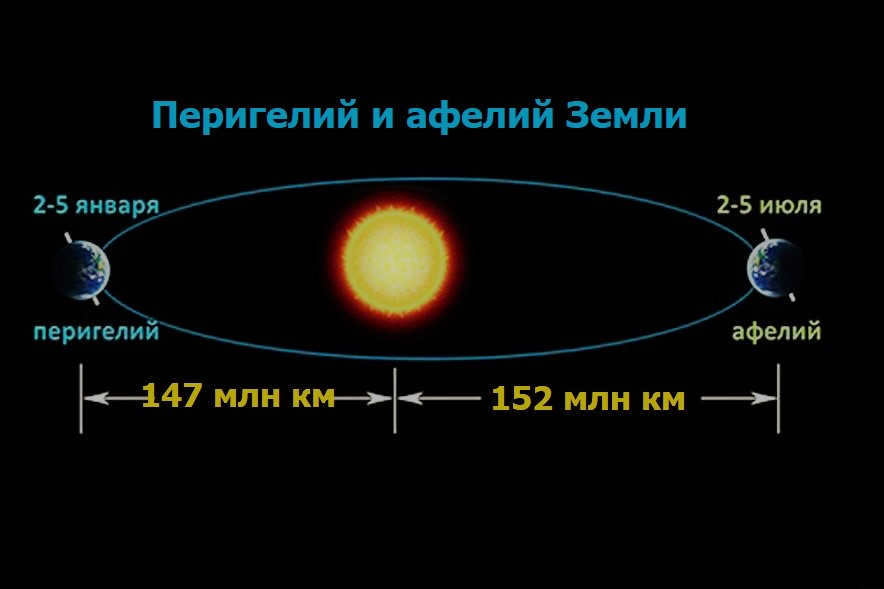

It is possible that the path of the Earth’s orbit may not remain constant. While a planet may orbit a star throughout its lifetime, its trajectory may vary. Ongoing studies of our planet’s orbit suggest that its motion could change in the future.
To examine this question in detail, computer models are currently being utilized to explore multiple scenarios for the future of the solar system. Only time will reveal which of these possibilities will come to fruition.
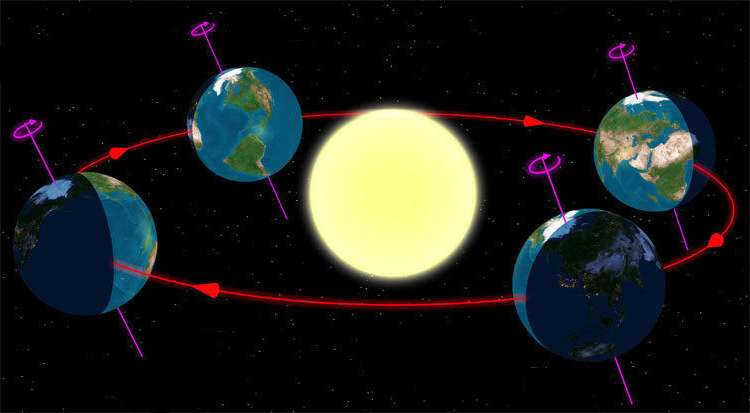
Similar to the other celestial bodies in our solar system, our beautiful planet revolves around its star. The Earth follows a specific trajectory known as an orbit. The Earth’s orbital motion is evidenced by the parallactic displacement of stars and the aberration of starlight. It takes a full year for the Earth to complete one revolution around the Sun.
The movement of the Sun
The Sun travels along the path known as the ecliptic, which mirrors the movement of the Earth as it orbits around the Sun. When the celestial sphere intersects with the Sun’s orbit, it creates a significant circle called the ecliptic. At a 23°27′ angle, the celestial equator and the ecliptic plane intersect. The points where these intersections occur mark the fall and spring equinoxes. The Sun is situated in these points twice a year – on September 23 and March 21 – as it transitions between the northern and southern hemispheres.
Earth’s Revolution around the Sun
The path of the Earth around the Sun is an ellipse, commonly known as an orbit, with the Sun located at one of its focal points. The distance between the Sun and the Earth varies throughout the year, ranging from 147 million kilometers at its closest point, known as perihelion, to 152 million kilometers at its farthest point, known as aphelion. The total length of the Earth’s orbit is over 930 million kilometers. The Earth’s barycenter, which is the center of mass between the Earth and the Sun, moves from west to east at an average speed of about 30 kilometers per second, completing the entire orbit in 365 days, 6 hours, 9 minutes, and 9 seconds. This time period is known as a sidereal year.
The time interval between two consecutive passages of the Sun through the vernal equinox is referred to as a tropical year. A tropical year consists of 365 days, 5 hours, 48 minutes, and 46 seconds, which is approximately 20 minutes shorter than a stellar (sidereal) year. This phenomenon, known as the advance of the equinoxes, is caused by precession.
An outcome of the Sun’s gravitational pull on the Earth
The present-day calendar (known as the Gregorian calendar) is designed to align with the length of the tropical year, but it still has a slight error of 1 day every 2800 years. As a result, even in 100,000 years, winter will mainly occur in the winter months and summer in the summer months!
In the current era, the Earth’s axis is tilted at an angle of 66.5° to the orbital plane and maintains a parallel motion throughout the year. This movement, caused by our planet’s orbit around the Sun, leads to the changing of seasons and the uneven distribution of daylight and darkness.
Tilt of Earth’s Axis
The Earth’s axis is tilted with respect to the plane of its orbit, causing the Sun’s rays to hit the planet at different angles. This results in significant variations in the amount of heat reaching the Earth’s crust during different times of the year, as well as variations in the length of daylight and nighttime throughout the year at all latitudes, except at the equator where day and night are equal.
On June 22, the northern end of Earth’s axis is pointed towards the Sun, marking the summer solstice. On December 22, the southern end of Earth’s axis is pointed towards the Sun, marking the winter solstice. March 21 is the vernal equinox, when both hemispheres receive equal light, and September 23 is the autumnal equinox, when both hemispheres again receive equal light.

Environment
The Earth undergoes four seasons as it completes one orbit around the Sun, all of which coincide with the varying lengths of daylight hours during the six months between the winter and summer solstices.
Additionally, we exist within a 24-hour daily cycle in which the Earth rotates on its axis, and there is also a 28-day cycle of the Moon’s revolution around the Earth. These cycles repeat indefinitely. However, there are numerous intricacies embedded within and around these cycles that often go unnoticed, unexplained, or overlooked by the majority of individuals.
10. High Point
Did you know: Noon is not always the time when the Sun is at its highest point.
The Sun’s position at its highest point can vary depending on the season. This is due to two factors: the Earth’s orbit is not a perfect circle but rather an ellipse, and the Earth is tilted towards the Sun. Because the Earth’s rotation is fairly consistent, and its orbit is faster than other times of the year, there are instances when our planet either catches up to or falls behind its circular orbit.
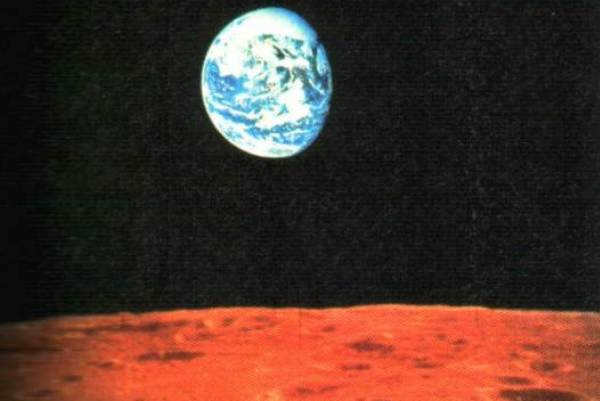

The best way to observe the effects of the Earth’s tilt is by looking at points close together on the equator. If you tilt a circle formed by these points by 23.44 degrees (the current value of the Earth’s tilt), you will notice that all points, except for those on the equator and tropics, will have a different longitude. Additionally, there are changes in the timing of the Sun reaching its highest point, which are also determined by the geographic longitude of the observer. However, this factor remains constant for each longitude.
9. The Path of the Rising Sun
Fact: The direction of the sunrise and sunset does not immediately change after the solstice.
Many people believe that in the northern hemisphere, the earliest sunset happens on the December solstice and the latest sunset happens on the June solstice. However, this is not entirely accurate. Solstices are simply dates that indicate the duration of the shortest and longest daylight hours. Nevertheless, changes in the length of the day still affect the timing of sunrise and sunset.
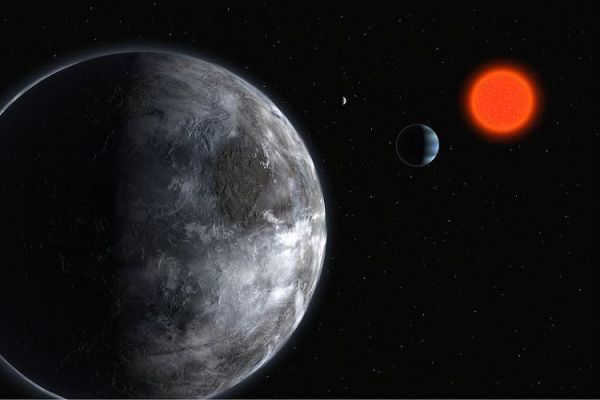
During the December solstice, the arrival of noon is delayed by 30 seconds every day. While the duration of daylight remains constant during this solstice, both sunrise and sunset are also delayed by 30 seconds each day. As a result, the earliest sunset has already occurred due to the delay in sunset on the winter solstice. Similarly, the latest sunrise is postponed because of the delayed sunrise on the same day.
It is also worth noting that the summer solstice is followed by a relatively short period of time before the latest sunset occurs. Similarly, the earliest sunrise occurs shortly before the summer solstice. However, it is important to mention that the difference in timing between these events is not as significant as it is during the December solstice. This is because the change in the time of noon during the summer solstice is influenced by both eccentricity and inclination, but the overall trend is still positive.
8. Earth’s elliptical orbit
It is commonly understood that the Earth orbits the Sun in an elliptical path rather than a perfect circle. However, the eccentricity of the Earth’s orbit is approximately 1/60. This means that the Earth’s orbit is slightly elongated, but still very close to being circular. In fact, any planet that orbits a star will always have an eccentricity value between 0 and 1, excluding 1. A value of 0 indicates a perfectly circular orbit, where the planet travels at a constant speed around the sun.

Nevertheless, it is highly improbable for such a trajectory to exist due to the continuous range of possible eccentricity values. The eccentricity, which is determined by the distance between the sun and the center of the ellipse in a closed orbit, increases as the orbit becomes more elongated and slender. As a planet approaches the sun, its rotational speed accelerates, while it decelerates as it moves away. Once the eccentricity reaches or exceeds 1, the planet completes one orbit around its sun and ventures into space indefinitely.
7. Oscillations of the Earth
The Earth experiences regular oscillations. This is primarily caused by gravitational forces that cause the Earth’s equatorial bulge to “stretch.” The Sun and Moon also exert pressure on this bulge, resulting in wobbles of the Earth. However, these effects are insignificant for ordinary astronomical observations.

The Earth rotates around the Sun and the Moon revolves around the Earth, creating a wobbling effect that lasts for a period of 18.6 years. During this time, the Moon’s orbit passes through specific points called nodes, causing the Earth’s tilt and longitude to change. These wobbles can last anywhere from two weeks to six months, depending on the positions of the Earth and the Moon in their respective orbits.
6. Flat Earth
Fact (of sorts): The Earth is actually not perfectly spherical.
During Galileo’s time, Catholics were partially correct in thinking that the Earth is flat. In reality, the Earth has a nearly spherical shape, but it is slightly flattened at the poles. The equatorial radius of the Earth is 6378.14 kilometers, while its polar radius is 6356.75 kilometers. Because of this, geologists have had to develop various definitions of latitude.

Visual latitude is the measurement of geocentric latitude, representing the angle between the equator and the Earth’s center. From an observer’s perspective, geographic latitude is the angle formed by the line of the equator and a person’s position on Earth. This type of latitude serves as the standard for map drawing and coordinate determination. However, when measuring the angle between the Earth and the Sun to determine the Sun’s position relative to the Earth during different times of the year, the geocentric system is always used.
5. Precession
The top of Earth’s axis becomes more pointed. Furthermore, the elongated circle that constitutes Earth’s path around the Sun rotates at a very gradual pace, resulting in the appearance of Earth’s movement resembling that of a daisy.
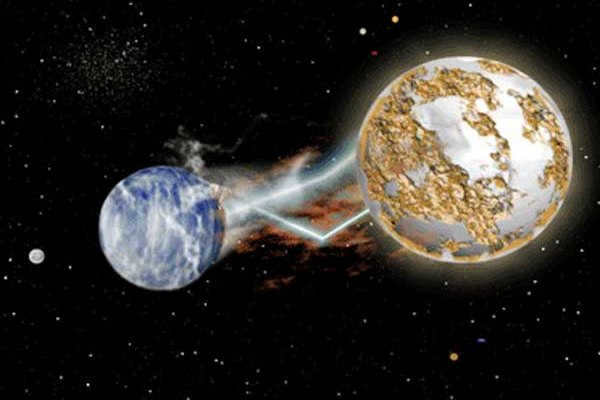
Astronomers have classified three types of years in relation to the two types of precession. These include the sidereal year (365, 256 days), which represents a complete orbit relative to distant stars. The anomalistic year (365, 259 days) denotes the time it takes for the Earth to move from its nearest point (perihelion) to its farthest point from the Sun (aphelion) and back again. Lastly, the tropical year (365, 242 days) spans from one day of the vernal equinox to the next.
4. Milankovitch cycles
In the early 20th century, astronomer Milutin Milankovitch made a groundbreaking discovery about the Earth’s tilt, eccentricity, and precession. He found that these values are not constant and undergo cycles over time. One such cycle is the tilt cycle, which lasts approximately 41,000 years. During this cycle, the Earth’s tilt ranges from 24.2 – 24.5 degrees to 22.1 – 22.6 degrees and then back again. Currently, the Earth’s tilt is decreasing, and we are halfway towards the minimum tilt of 22.6 degrees, which is expected to be reached in approximately 12,000 years. Another cycle is the eccentricity cycle, which spans 100,000 years and displays a more erratic pattern. During this cycle, the Earth’s eccentricity varies between 0.005 and 0.05.

As previously mentioned, the current value is 1/60 or 0.0166, but it is currently decreasing. It will reach its minimum point in 28,000 years. These cycles are believed to be the main cause of ice ages. When the tilt and eccentricity values are exceptionally high, and the precession causes the Earth to tilt away from or towards the Sun, we experience extremely cold winters in the western hemisphere and excessive ice melting in the spring or summer.
3. Slowing down of rotation
The Earth’s rotation is gradually slowing down due to the friction caused by tides and stray particles in space. Scientists estimate that with each passing century, it takes an additional five hundredths of a second for the Earth to complete one full turn. In the early stages of Earth’s formation, a day lasted only 14 hours instead of the 24 hours we have today. This deceleration of the Earth’s rotation is the underlying cause for the occasional addition of a fraction of a second to the length of a day, which occurs every few years.

Nevertheless, the distant future holds the possibility of our 24-hour system becoming obsolete, and the question arises as to how we would make use of the newfound time. Speculations have been scarce, but some propose the idea of adding a segment to each day, gradually leading to a 25-hour day, while others suggest altering the duration of an hour by dividing the day into 24 equal portions.
2- The Moon is getting farther
Each year, the Moon is gradually moving away from its orbit around the Earth at a rate of 4 centimeters. The primary cause for this phenomenon is the gravitational effect of the Moon on Earth’s tides.
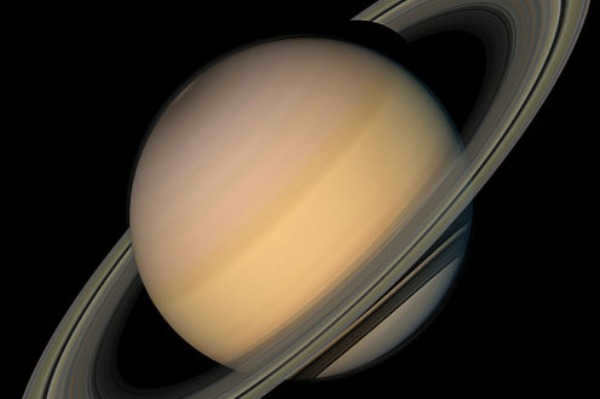
The gravitational force of the Moon causes the Earth’s crust to deform by a few centimeters. Due to the Moon’s faster rotation compared to its orbit, these deformations tug on the Moon and disrupt its orbit.
1. Seasonal Variation
The solstice and equinox mark the beginning of their respective seasons rather than the middle. This is because it takes time for the Earth to heat up or cool down. As a result, seasonal variation is characterized by the duration of daylight, a phenomenon known as seasonal delay. The extent of this delay varies depending on the observer’s geographical location. The further one is from the poles, the less pronounced the lag becomes.
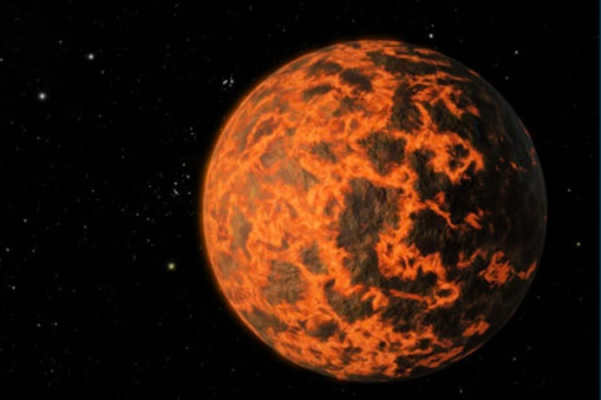
In numerous cities across North America, there is typically a delay of approximately one month, resulting in the coldest temperatures occurring on January 21 and the warmest temperatures on July 21. However, individuals residing in these latitudes are still able to enjoy warm summer days towards the end of August, where they can dress lightly and even visit the beach. Conversely, on the “opposite side” of the summer solstice, this same date would correspond to around April 10. As a result, many individuals find themselves eagerly anticipating the arrival of summer.
From our educational background, we are all familiar with the fact that the Earth rotates in relation to the Sun. The orbit represents the path that our planet follows around this celestial body. Are there any notable characteristics associated with this orbit?
The configuration of the path
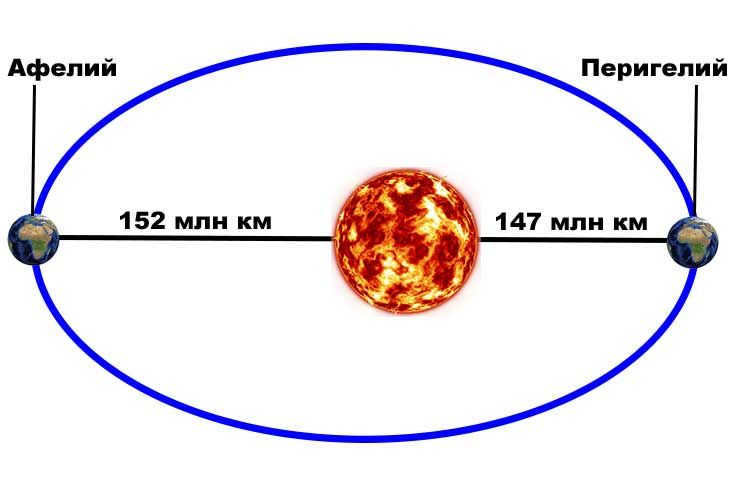
For a considerable duration, astronomers held the belief that the paths followed by celestial bodies are circular. Nevertheless, Johannes Kepler ascertained that the planets, including Earth, actually traverse along an elliptical trajectory, with the Sun being situated at one of the foci of this ellipse.
An ellipse, resembling a flattened circle, possesses a characteristic known as eccentricity. This parameter determines the extent to which its shape deviates from that of a circle. Eccentricity can range from zero to one. If it attains a value of zero, then the orbit assumes the form of a perfect circle, with the star positioned at its center. Earth’s eccentricity is 0.0167, implying that our orbit is remarkably close to being circular.
The farthest point from its luminary that a celestial body reaches is called apocentre, while the closest point is known as pericenter. These terms are also used for the planets within our solar system, with aphelion indicating the farthest point and perihelion indicating the closest point. When the Earth is at aphelion, it is located 152 million kilometers away from the Sun, whereas at perihelion, this distance is reduced to 147 million kilometers.
This slight variation in the Earth’s orbit radius plays a significant role in supporting life on our planet, as it helps maintain a stable average temperature. To provide a comparison, Mercury’s orbit radius fluctuates between 46 and 70 million kilometers, resulting in an eccentricity value of 0.2.
How Far is the Sun from the Earth?
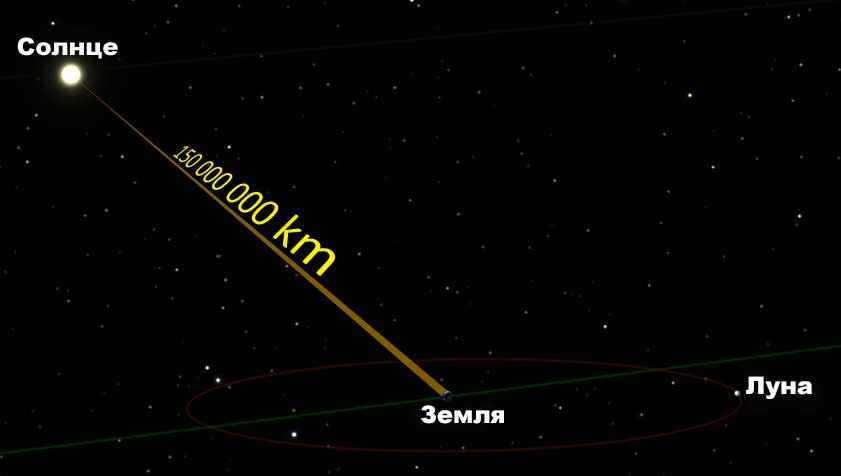
One astronomical unit is defined as the average radius of the Earth’s orbit, which is approximately 150 million km. This unit of measurement is commonly used in describing distances in outer space, particularly within the Solar System.
The main idea is that it is much simpler to determine relative distances in space (such as calculating that the radius of Venus’s orbit is 1.4 times smaller than the radius of Earth’s orbit) rather than calculating absolute distances. As a result, astronomers established the distance between Earth and the Sun as a standard unit and used it to express all other linear measurements in our planetary system. It wasn’t until 1672 that Italian astronomer Giovanni Cassini managed to estimate the radius of Earth’s orbit at 140 million kilometers by measuring the parallax of Mars.
A more precise measurement of the astronomical unit was achieved in 1961 by Soviet astronomers through the use of radiolocation on Venus. They determined the value to be 149,599,300±2000 km.
The velocity of the Earth’s movement
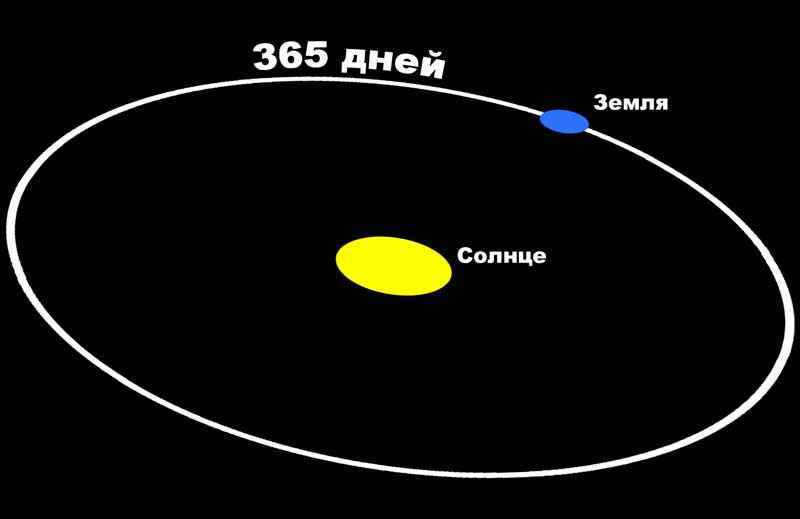
The complete distance covered by our planet during its orbit amounts to 940 million kilometers, which the Earth completes in 365.25 days. This is the reason why every fourth year is designated as a leap year, with the addition of an extra day on February 29. Additionally, it should be noted that celestial bodies do not move at a constant speed throughout their orbit. The planets travel at their fastest rate when they are closest to the Sun (pericenter) and slow down when they are farthest away (apocenter). On July 3, the Earth reaches its farthest point from the Sun (aphelion), moving at a speed of 29.2 km/s. Conversely, on January 3, our planet reaches its closest point to the Sun (perihelion) and accelerates to a speed of 30.2 km/s.
Plane of orbit
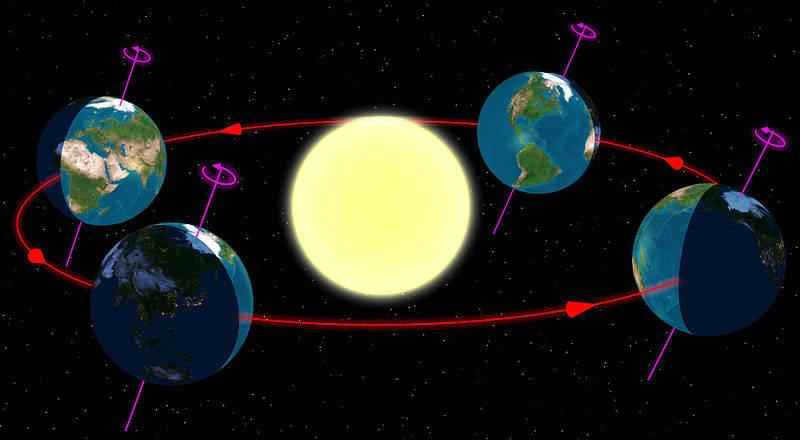
Each celestial body follows a specific path in space, known as its orbit. An orbit is essentially a two-dimensional plane, meaning that all the points of the celestial body’s path lie within the same plane. In the case of the Earth, its orbit is called the ecliptic. It’s worth noting that the orbits of almost all the planets in our solar system are also aligned with the ecliptic. The Earth’s axis of rotation is tilted at an angle of 23 degrees to the ecliptic, and this tilt has significant effects on our planet. It leads to uneven heating of the Northern and Southern Hemispheres during different parts of the Earth’s orbit, which is responsible for the changing seasons. For instance, when it is summer above the equator, it is winter below it, and vice versa.
The Sun also undergoes rotation around its own axis, along with all the other planets rotating in alignment with the celestial body. This provides circumstantial data suggesting that the substance forming the planets and our star was originally a singular gas-dust cloud, from which the construction materials for the planets were separated. However, there is one irregularity that has yet to be explained. The Sun itself does not rotate within the ecliptic, but rather deviates from it by six degrees. Astronomers propose that this discrepancy could potentially indicate the presence of undiscovered planets in our solar system, which also move outside the ecliptic and exert gravitational influence on the Sun’s rotational axis.
The shape of the orbit deviates from its ideal form
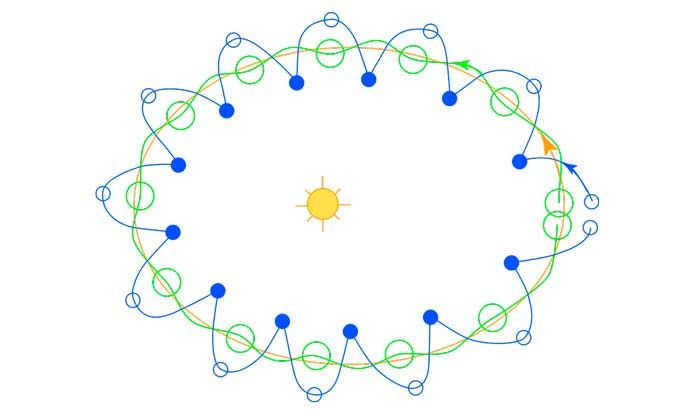
Kepler’s concept that the paths of heavenly bodies are ellipses accurately explained the behavior of planets as observed in the 17th century. However, as measurements became more precise, deviations from Kepler’s laws were discovered. The reason for this is that the mathematical model proposed by the German astronomer was based on two simplifications:
- The mass of the planet is considered negligible compared to the mass of the star.
- Only the gravitational interaction between the star and the planet is taken into account, without considering the influence of other bodies (such as other planets).
Undoubtedly, in reality, the situation is much more complex. In actuality, it is more accurate to consider that it is not the Earth that orbits around the Sun, but rather both celestial bodies revolve around a mutual center of mass, known as the barycenter. However, due to the immense mass of the star, the barycenter is located within it.
Precise astronomical measurements indicate that in the present time, the distance between the Earth and the Sun is gradually increasing at a rate of 15 centimeters per year. Nevertheless, this does not imply that our planet will constantly drift away from the radiant star; periods of separation may alternate with periods of convergence.
Take, for instance, the findings of astronomer Milutin Milankovic, who revealed that the Earth’s orbit does not maintain a constant eccentricity, but instead undergoes cyclical changes. These cycles, which last approximately 100 thousand years, witness the eccentricity fluctuating between 0.005 and 0.05. It is precisely these oscillations that serve as the driving force behind ice ages.
Is the stability of Earth’s orbit guaranteed?
According to Kepler’s laws, planets have the potential to orbit around a star indefinitely. However, deviations from these laws can introduce instability, potentially causing planets to either deviate from their orbits or collide with the star. Due to the complexity of the problem, it is not possible to calculate this analytically, and computer modeling is required.
Unfortunately, the calculations do not provide a definitive prediction for the fate of the planets in our solar system. In some models, Mercury may eventually fall into the Sun or collide with Venus or Earth, potentially leading to collisions with other planets. However, such events would likely take billions of years to occur.
What is the trajectory of our planet?

The Earth, similar to the rest of the celestial bodies in our solar system, revolves around its central star. The Earth’s movement can be described as following a specific orbit. The parallactic displacement of stars and the aberration of starlight are two phenomena that provide evidence of the Earth’s orbital motion. It takes one year for the Earth to complete a full revolution around the Sun.
Sun’s Movement
The Sun’s path follows the ecliptic, mirroring the Earth’s movement along its orbit. When the celestial sphere intersects the Sun’s orbit, it creates a significant circle known as the ecliptic. The plane of the celestial equator and the plane of the ecliptic intersect at a 23°27′ angle. This intersection gives us the points of the fall and spring equinoxes. On September 23 and March 21, the Sun occupies these points as it transitions from the northern hemisphere to the southern hemisphere or vice versa.
Earth’s Path around the Sun
The Earth’s orbit, known as an ellipse, revolves around the Sun, which is located at one of its focal points. The distance between the Sun and the Earth varies throughout the year, ranging from 147 million kilometers at perihelion to 152 million kilometers at aphelion. The total length of the orbit is over 930 million kilometers. The Earth’s barycenter moves from west to east with an average speed of about 30 km/s, completing the entire distance in 365 days, 6 hours, 9 minutes, and 9 seconds. This period is referred to as a sidereal year.
The time between two consecutive passes of the Sun through the vernal equinox is known as a tropical year. A tropical year is equal to 365 days, 5 hours, 48 minutes, and 46 seconds, which is 20 minutes shorter than a stellar (sidereal) year. This phenomenon, known as the advance of the equinoxes, is caused by precession.
A result of the Earth’s orbit around the Sun
The current calendar (Gregorian) is adjusted to match the length of the tropical year, with a slight discrepancy of 1 day every 2800 years. Therefore, even in 100,000 years, winter will primarily occur during the winter months, and summer will predominantly take place in the summer months!
During the present era, the Earth’s axis of rotation is tilted at an angle of 66.5° to the orbital plane and maintains its parallel orientation in space throughout the year. This movement of our planet as it orbits the Sun leads to the changes in seasons and the variation in the length of day and night.
Tilt of the Earth’s Axis
The Earth’s axis is tilted in relation to the plane of its orbit, causing the Sun’s rays to hit at different angles. This leads to variations in the amount of heat reaching the Earth’s crust throughout the year. Additionally, the length of day and night varies throughout the year at all latitudes, except at the equator where day and night are equal.
On June 22nd, our planet’s axis aligns with its northern end facing the celestial luminary, marking the day of the summer solstice. On December 22nd, the Earth’s axis aligns with its southern end facing the Sun, marking the day of the winter solstice. March 21st is known as the vernal equinox, and September 23rd is known as the autumnal equinox, on these days both hemispheres receive equal amounts of light.
Did you find this article interesting? Share it with your friends!
Earth’s path around the Sun
The way in which the Earth travels around the Sun within the vast solar system is an area of interest for many researchers. Scientists study this phenomenon to understand the planet’s elliptical movement, the shift in seasons, and the occurrence of the autumn and spring equinoxes, as well as the Lagrangian regions. This article will delve deeper into the concept and provide a more comprehensive understanding of Earth’s orbit.
Characteristics of Earth’s Orbit
During the 16th century, Nicholas Copernicus initiated a major revolution by demonstrating that the Sun is at the center of the solar system. According to his heliocentric model, all other celestial bodies, including the planet Earth, orbit around the Sun. As a result, Earth’s orbit around the Sun became a topic of great significance.
Key features of the subject in question
The Earth’s path around the Sun spans over 930 million kilometers. Our planet orbits the Sun in a specific pattern, with a speed of 108,000 kilometers per hour. It takes 365.242199 solar days for one complete revolution. As a result, an extra day is added every three years, making the total not 365, but 366 days.
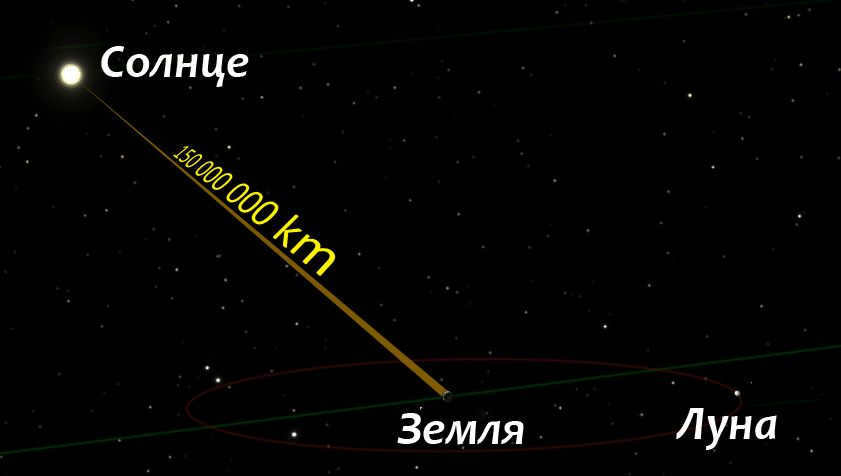
The distance between the Earth and the Sun varies as the Earth orbits around it. At its closest point, called perihelion, the distance is 147,098,074 kilometers. On average, the distance is about 149.6 million kilometers. The farthest point, known as aphelion, is about 152,097,701 kilometers away.
When considering the Earth’s orbit, it becomes clear that there are unique aspects to it, especially for those living in the northern hemisphere. People in this region may notice that temperature differences do not necessarily correspond to the distance from the Sun. This is because their climate is influenced by the tilt of the Earth’s axis.
Elliptical Shape
The Earth’s orbit is not a perfect circle. Instead, we revolve around our celestial luminary on an elliptical path with a moderate elongation. This discovery was first made by Johannes Kepler, who observed a distinct pattern in planetary motion and began studying it. As a result, he found that the orbit of Earth and other planets can be described by an elliptical shape.
In addition to this, Kepler also measured the orbits of Mars and Earth and noticed a peculiar pattern. The planets alternated between slowing down and gaining acceleration. This pattern coincided with the parameters of perihelion and aphelion, which determine the distance from the celestial luminary. Therefore, the orbital velocity is influenced by the distance from the luminary.
In order to describe the nature of the elliptical paths of planets, scientists from all over the globe have started employing the concept of eccentricity. In the particular scenario being examined, this value ranges from 0 to 1. If the parameter approaches 0, it signifies a perfect circle. If it approaches 1, it indicates a stretched out ellipse.
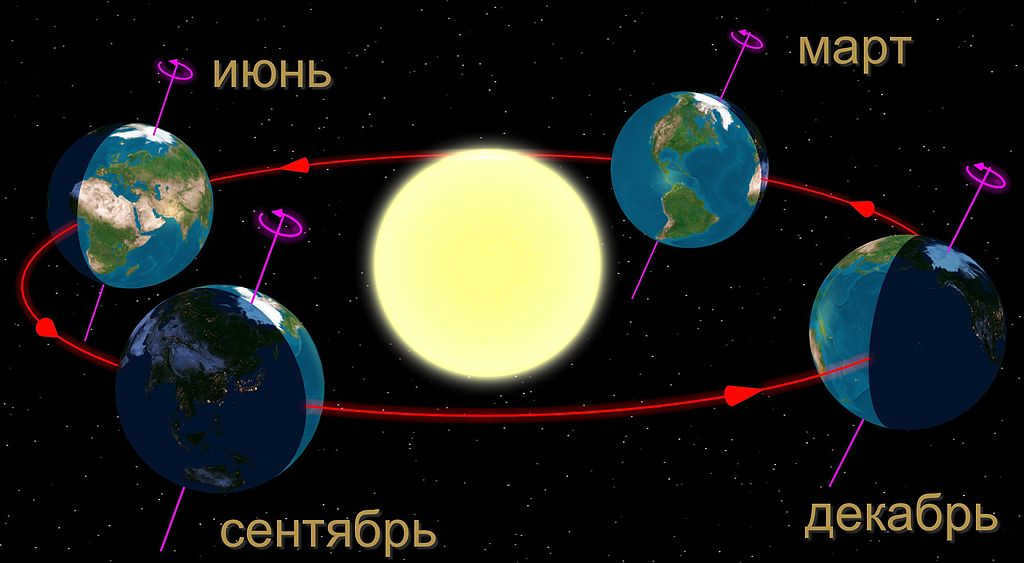
The Earth’s orbit is the path it takes around the Sun. One important factor to consider is the tilt of the Earth’s axis. The seasons we experience are a result of this tilt, which is about 23.4 degrees. This tilt leads to astronomical events known as equinoxes and solstices, which mark the changing of the seasons.
The position of the axis remains constant, meaning that the way solar radiation is distributed varies. For example, when the northern hemisphere moves away from the Sun, it experiences winter while the southern hemisphere experiences summer. This system changes after six months. The winter solstice occurs on December 21st, while the summer solstice occurs in June. The vernal equinox falls on March 20th, and the autumnal equinox occurs on September 23rd.
Points of Lagrange
As previously mentioned, the Earth’s trajectory around the Sun is referred to as an orbit. It is distinguished by regions known as Lagrangian points. The reality is that there are five of these objects along our path. The combined gravitational force exerted by them is centripetal and proportional. These points are denoted as L1 through L5. They are established along a straight line formed between the Earth and the Sun. However, they lack stability, so any satellite sent to these points will eventually drift away.
Points L4 and L5 are located in the angular sections of the two triangles that are formed. In this particular scenario, the Sun and the Earth are situated at the lower part. Due to their persistence, they serve as the most advantageous zones for the utilization of space telescopes and probes. Scientists are particularly interested in not only the orbit of our planet, but also other celestial bodies that have a relatively close distance to Earth.
Hence, the trajectory of Earth’s movement around the Sun is referred to as an orbit, which is not a perfect circle, but an ellipse.
In the 16th century, Nicolaus Copernicus sparked a true revolution by proving that the Sun is positioned at the center of the solar system, and the other objects revolve around it (heliocentric system). So, what about the circular orbit of Earth?
Characteristics of Earth’s Orbit
The Earth travels around the Sun at a speed of 108,000 km/h, completing a full orbit in 365.242199 solar days. This is why we have to add an extra day every four years.
Throughout its orbit, the distance between the Earth and the Sun varies. At its closest point, known as perihelion, the Earth is 147,098,074 kilometers away from the Sun. On average, the distance is about 149.6 million kilometers. The farthest point from the Sun, called aphelion, is 152,097,701 km.
If you live in the northern hemisphere, you may have noticed that the temperature doesn’t solely depend on the distance from the Sun. This is because it also depends on the tilt of the Earth’s axis.
Earth’s elliptical path
No, the planet’s trajectory does not follow a perfect circle. Our orbit takes the form of an elongated ellipse. Johannes Kepler was the first to describe this. You can observe the Earth’s orbital movement in the provided diagram.
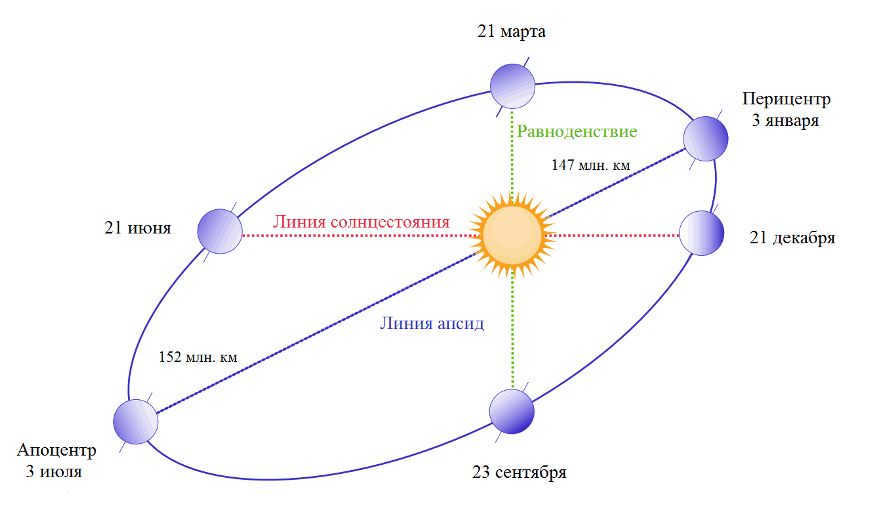
The scientist made measurements of the Earth and Mars orbits and came to the realization that periodically they experience changes in their speed. This observation coincided with the aphelion and perihelion indices, which suggest that the distance from the star is determined by the orbital velocity, rather than a perfectly circular orbit.
In order to describe the nature of these elliptical orbits, researchers utilize the concept of eccentricity, which ranges from 0 to 1. When the eccentricity is close to 0, it indicates that the orbit is nearly circular. For the Earth, the eccentricity is 0.02, which means it is very close to being circular.
Orbital Variations that Cause Seasonal Changes
The inclination of the Earth’s axis is a significant factor. The existence of our four distinct seasons is directly attributed to the fact that the Earth’s axis is tilted at an angle of 23.4°. This inclination leads to the occurrence of solstices and equinoxes.
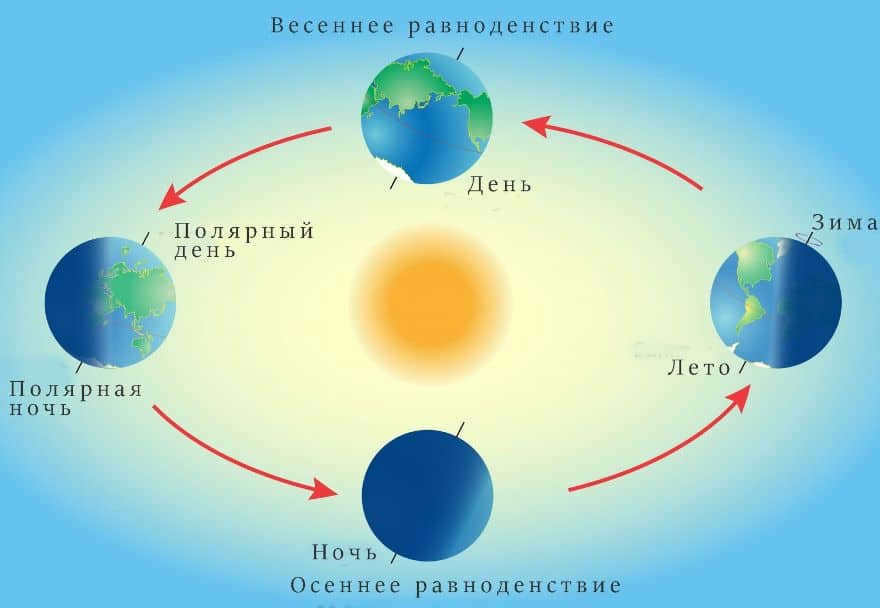
The position of the axis remains fixed, resulting in a redistribution of solar radiation.
This means that when the northern hemisphere moves away from the Sun, it enters winter, while the southern hemisphere experiences the warmth of summer. This pattern switches after 6 months. The winter solstice occurs on December 21, the summer solstice occurs on June 21, the spring equinox occurs around March 20, and the fall equinox occurs on September 23.
Another interesting point is the concept of Lagrange points in space. These are 5 specific points along our orbital path where the combined gravitational force between the Earth and the Sun provides a centripetal force.
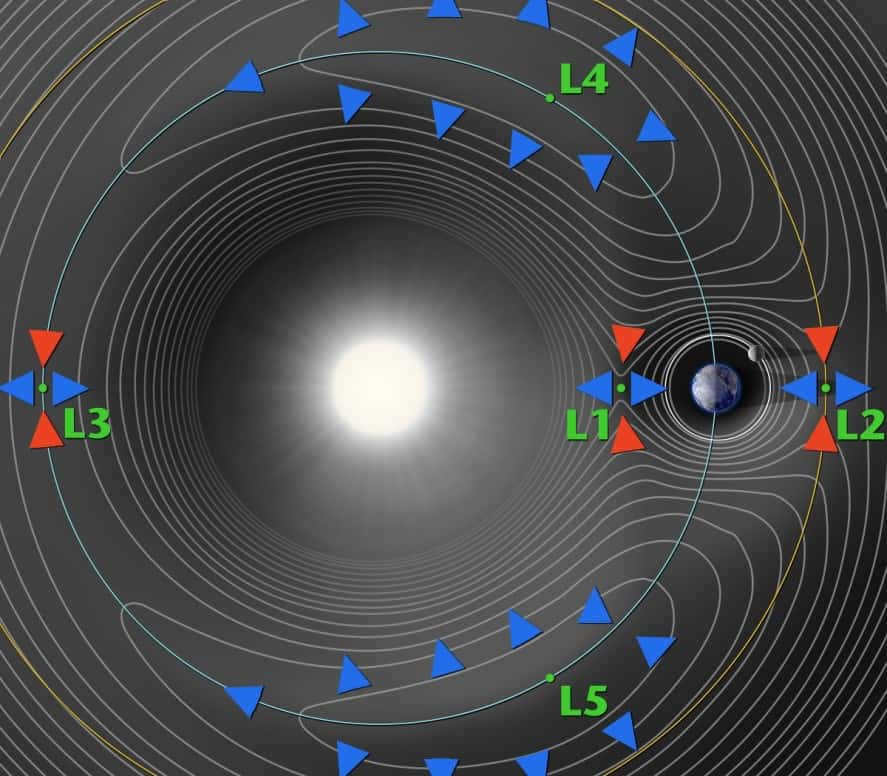
The orbit of the Earth around the Sun has certain points known as Lagrangian points. These points, labeled as L1 through L5, have different characteristics. L1, L2, and L3 are aligned in a straight line between the Earth and the Sun. However, they are not stable, meaning that if a satellite is placed there, it will eventually shift from its original position.
On the other hand, L4 and L5 are located at the corners of two triangles, where the Sun and the Earth are positioned at the base. These points are more stable and are considered the best locations for probes and telescopes. Scientists often choose these points to study various astronomical phenomena.
Studying the orbits of not only our own planet but also other celestial bodies in the solar system is crucial. The distance from a star plays a significant role in determining the conditions for life to exist on a planet. Therefore, understanding the orbits of alien worlds can provide valuable insights into the potential presence of extraterrestrial life.
What is the path of the Earth as it revolves around the Sun?
As we learn in school, the Earth revolves around the Sun. This path is known as the orbit, which is the trajectory that our planet follows around the star. Are there any unique characteristics to this orbit?
The shape of the Earth’s trajectory

For a considerable time, astronomers held the belief that the paths followed by celestial bodies were circular. Nevertheless, Johannes Kepler made the discovery that the planets, including our own Earth, actually traverse an elliptical trajectory, with the Sun being situated at one of the foci of this ellipse.
An ellipse, which bears a resemblance to a flattened circle, possesses a parameter known as eccentricity. This parameter determines the degree to which its shape deviates from that of a circle. Eccentricity can assume a value ranging from zero to one. If it is equal to zero, then the orbit becomes a perfectly circular one, with the star positioned at its center. The eccentricity of Earth is 0.0167, indicating that our orbit is very close to being circular.
The apocenter is the point at which a celestial body is farthest from its luminary, while the pericenter is the closest point. In the context of the solar system, the terms aphelion and perihelion are used. When the Earth is at aphelion, it is 152 million kilometers away from the Sun, and at perihelion, the distance decreases to 147 million kilometers.
This slight variation in the Earth’s orbit radius is crucial for sustaining life on the planet, as it helps maintain a stable average temperature. To put it into perspective, Mercury’s orbit radius fluctuates from 46 to 70 million kilometers, giving it an eccentricity value of 0.2.
The Earth’s Distance from the Sun

The Earth’s orbit is known as the path that the Earth follows around the Sun. It has an average radius of 150 million km, which is considered to be one astronomical unit – a unit of measurement for distances in outer space. This measurement was established for convenience when discussing the solar system.
The main idea is that it is much simpler to determine relative distances in our planetary system (such as calculating that the radius of Venus’ orbit is 1.4 times smaller than Earth’s orbit) rather than calculating absolute distances. That’s why astronomers established the distance between the Earth and the Sun as a standard unit and expressed all other linear dimensions in our planetary system based on it. It wasn’t until 1672 that the Italian Giovanni Cassini was able to estimate the radius of Earth’s orbit, measuring the parallax of Mars, at 140 million kilometers.
A more precise value for the astronomical unit was obtained by Soviet astronomers in 1961 through radio-location of Venus. They determined the value to be 149,599,300±2000 km.
The velocity of the Earth’s movement

The Earth’s orbit has a total length of 940 million km, which it completes in 365.25 days. To account for this extra quarter day, a leap year is added every four years, including February 29. Interestingly, celestial bodies move at different speeds during their orbits. The planets move the fastest when they are closest to the sun, in a point called the pericenter. On the other hand, they move the slowest when they are farthest from the sun, in a point called the apocenter. The Earth reaches its farthest point from the sun, known as aphelion, on July 3, where its speed slows down to 29.2 km/s. Conversely, on January 3, the Earth reaches its closest point to the sun, known as perihelion, and its speed accelerates to 30.2 km/s.
The orbit’s plane

The path followed by each celestial object is a two-dimensional shape, meaning that all of its points are contained within the same plane. The specific plane that the Earth follows in its orbit is known as the ecliptic. It is interesting to note that the orbits of all the planets in our solar system are almost aligned with the ecliptic. The Earth’s axis is tilted at an angle of 23 degrees relative to the ecliptic. This tilt is responsible for the uneven distribution of heat between the Northern and Southern Hemispheres during different parts of the Earth’s orbit, which ultimately leads to the changing seasons. When the Northern Hemisphere is tilted towards the Sun, it experiences summer, while the Southern Hemisphere experiences winter, and vice versa.
The Sun also has its own rotation, along with all the planets rotating in the same direction as the star. This provides indirect proof that the planets and our star were once part of a single gas and dust cloud, which eventually separated to form the building materials for the planets. However, there is one peculiar anomaly that remains unexplained. The Sun itself does not rotate in the same plane as the planets, but deviates from it by six degrees. Astronomers propose that this could be evidence of undiscovered planets in our solar system, which also have non-ecliptic orbits and exert gravitational influence on the Sun’s rotation axis.
The trajectory of the orbit differs from its ideal form

Kepler originally proposed the idea that the orbits of celestial bodies, such as planets, are elliptical in shape. This concept accurately described the behavior of planets as observed by astronomers in the 17th century. However, as measurements became more precise, deviations from Kepler’s laws started to be discovered. This was because Kepler’s mathematical model was based on two simplifications:
- The mass of the planet was considered negligible compared to the mass of the star.
- Only the gravitational forces between the star and planet were taken into account, while the influences of other bodies, such as other planets, were ignored.
Undoubtedly, in actuality, everything is more intricate. In reality, it is more precise to consider that it is not the Earth that orbits around the Sun, but rather both celestial bodies orbit around a shared center of mass, which is referred to as the barycenter. However, due to the immense mass of the star, the barycenter is situated within it.
Precise astronomical measurements demonstrate that in the present time, the distance between the Earth and the Sun is gradually expanding at a rate of 15 centimeters per year. Nevertheless, this does not imply that our planet will be continually moving away from the star; periods of separation can alternate with periods of convergence.
As an illustration, Milutin Milankovic, an astronomer, made the discovery that the Earth’s orbit’s eccentricity is not consistent but instead undergoes cyclic changes. These cycles last for approximately 100,000 years, during which the eccentricity fluctuates between 0.005 and 0.05. It is these variations that give rise to periods of glaciation.
Does the Earth’s orbit remain stable?
Based on Kepler’s laws, the planets have the potential to orbit around their star indefinitely. However, deviations from these laws can lead to potential instability, where planets may either stray from their orbit or collide with the star. Analytically calculating this is impossible, which is why computer modeling is necessary.
The calculations do not provide a definitive prediction for the fate of the planets in our solar system. In certain models, Mercury may either collide with the Sun or collide with Venus or Earth, potentially leading to collisions with other planets. However, this process would take billions of years.
What is the path that our planet follows in space?

Similar to the rest of the celestial bodies in our solar system, the Earth undergoes a rotational motion around its star. The Earth’s trajectory is defined as its orbit. The parallactic displacement of stars and the aberration of starlight serve as evidence of the Earth’s orbital movement. It takes one year for the Earth to complete a full revolution around the Sun.
The movement of the Sun
The Sun’s path follows the ecliptic, mirroring the Earth’s movement along its orbit. When the celestial sphere intersects the path of the Sun’s orbit, it creates a significant circle known as the ecliptic. At a 23°27′ angle, the celestial equator and the ecliptic intersect. The points where these intersections occur mark the fall and spring equinoxes. On September 23 and March 21, the Sun can be found in these points, transitioning from the northern hemisphere to the southern hemisphere or vice versa.
Earth’s Revolution around the Sun
The Earth’s orbit is a circular path known as an ellipse, with the Sun positioned at one of its foci. Throughout the year, the distance from the Sun to the Earth varies, ranging from 147 million km at perihelion to 152 million km at aphelion. In total, the orbit spans over 930 million km. The Earth’s barycenter moves in an eastward direction at an average speed of approximately 30 km/s, completing the entire distance in 365 days, 6 hours, 9 minutes, and 9 seconds. This time period is referred to as a sidereal year.
The time interval between two consecutive occurrences of the Sun passing through the vernal equinox is known as a tropical year. This type of year lasts for 365 days, 5 hours, 48 minutes, and 46 seconds, making it 20 minutes shorter than a stellar (sidereal) year. This phenomenon is called the precession and is responsible for the advancement of the equinoxes.
A Result of the Earth’s Orbit around the Sun
The current calendar, known as the Gregorian calendar, has been adjusted to align with the length of the tropical year, with an error rate of 1 day every 2800 years. As a result, even in the span of 100,000 years, winter will mostly occur in the winter months and summer in the summer months!
During the present era, the Earth’s axis of movement is tilted at an angle of 66.5° to the orbital plane and maintains a parallel path throughout the year in space. This movement of our planet around the Sun leads to the changing of seasons and the variation in the length of day and night.
Tilt of Earth’s Axis
The Earth’s axis is tilted relative to the plane of its orbit, causing the Sun’s rays to hit the Earth at different angles. This leads to variations in the amount of heat reaching the Earth’s surface throughout the year, as well as differences in the length of day and night at all latitudes (except the equator, where day and night are equal).
On June 22nd, the northern end of Earth’s axis is pointed towards the Sun, resulting in the summer solstice. On December 22nd, the axis points south towards the Sun, marking the winter solstice. March 21st is the vernal equinox, and September 23rd is the autumnal equinox, when both hemispheres receive equal illumination.





